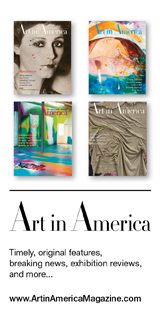Week Three: Museums and the 3D Design Market
by Nicole Swengley
In the last of three articles design writer, Nicole Swengley, looks at the role of museums in underpinning the market for 3D printed objects.
A museum’s stamp of endorsement can do much to enhance an object’s collectability in the marketplace. So it’s worth keeping an eye on the designs acquired for permanent collections and loaned for temporary shows.
It’s not surprising that Patrick Jouin’s OneShot.MGX folding stool has been acquired by New York’s Museum of Modern Art, Centre Pompidou in Paris, The Art Institute of Chicago and the V&A in London because it was the first object ever to be printed fully articulated, requiring no assembly. It was produced in 2006 by Belgian specialist, Materialise, in laser-sintered nylon and emerged from the printer complete with all its moving, mechanical parts.
MoMA’s permanent collection also includes Jouin’s C2 solid chair made by Materialise in epoxy resin in 2004, Amanda Levete’s fruit bowl made by Materialise in laser-sintered nylon in 2005, Ammar Elouieni’s CoReFab#116_25 polyamide nylon chair made by the designer’s AEDS studio in France in 2006 and Finnish designer Janne Kyttanen’s Macedonia fruit bowl made by Netherlands-based Freedom of Creation in quartz sand with epoxy infiltration in 2007.
The V&A’s first 3D printed acquisition was the Fractal.MGX table, designed by Gernot Oberfell and Jan Wertel with Matthias Bar, which featured in a show curated by New York gallerist, Murray Moss, at the museum during London Design Festival (see the first article in this series). Editions of this design and Jouin’s OneShot.MGX stool are available from Moss at $42,000 and $3,200 respectively.
“An object has to be important for design history in terms of new material, techniques or social impact and we think the Fractal table is so visibly produced by a very different method that it’s important to have it in our new furniture gallery opening in autumn 2012,” says Jana Scholze, curator for modern furniture and product design at the V&A.
It’s a view shared by Zoe Ryan, Chair and John H. Bryan Curator of Architecture and Design at The Art Institute of Chicago. “As we continue to identify potential acquisitions made using 3D printing processes, we are looking for designs that push the capabilities of the manufacturing processes,” she says. “Rather than glorifying technology, the most innovative designs are those that use new technologies in the service of qualitatively different objects that go beyond previously realised designs and offer new ways of engaging with and understanding the world.” She cites Dan Yeffet’s epoxy Polyvase from 2006 and architect Greg Lynn’s Flatware prototypes created for Alessi in 2007 from silver-plated SLS (selective laser sintering) as key examples.

Fractal.MGX table by Gernot Oberfell and Jan Wertel with Matthias Bar























